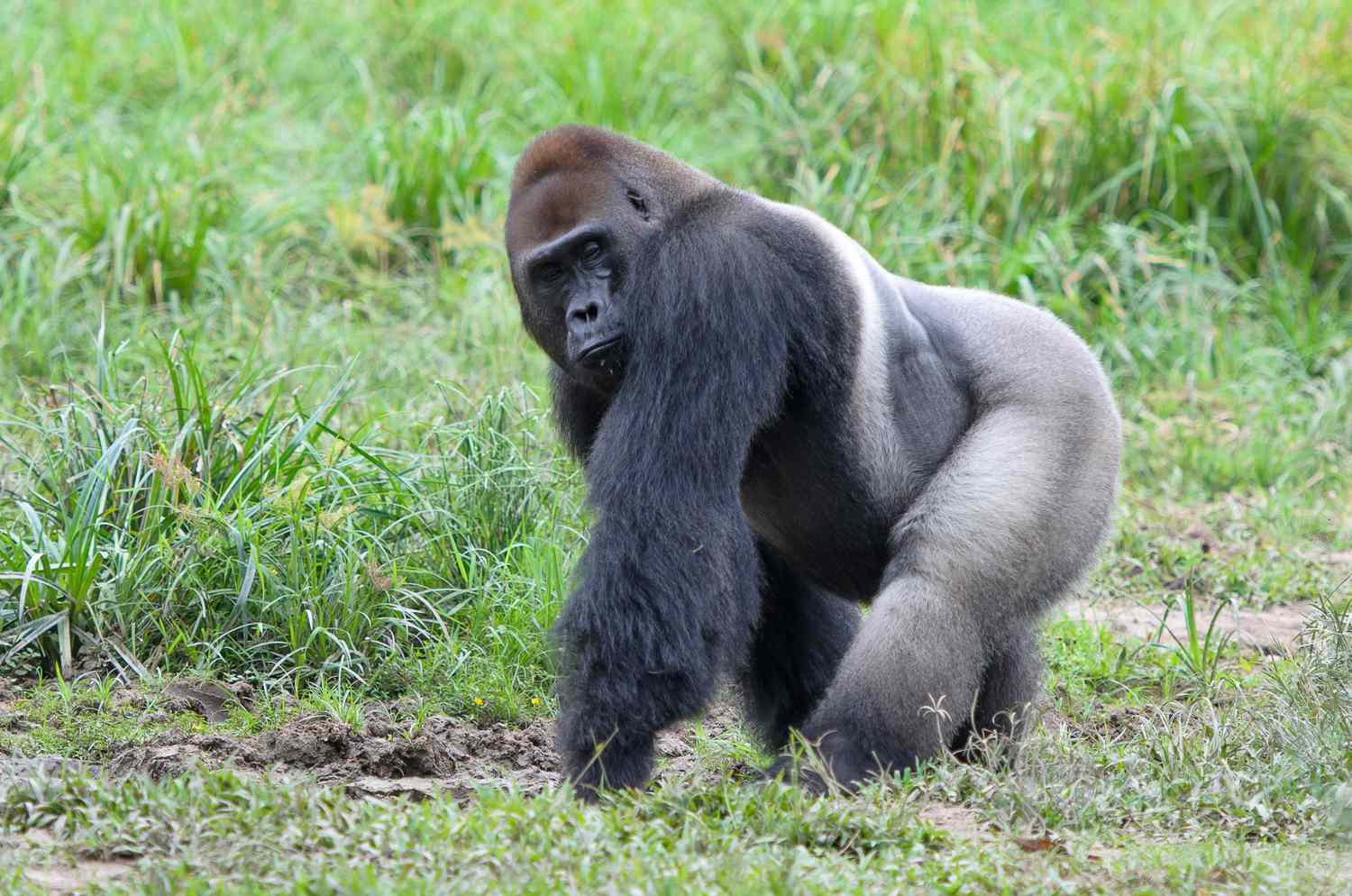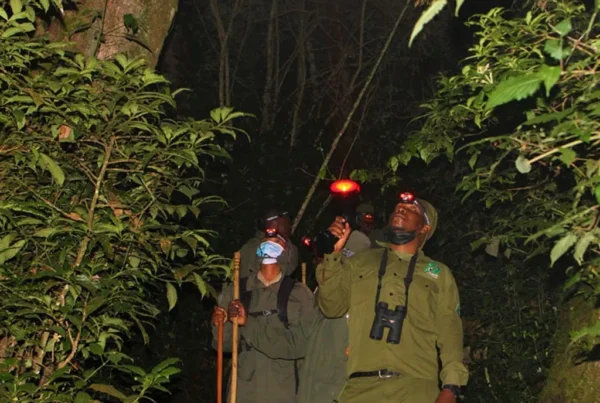Western Lowland Gorilla: The Gentle Giants of Africa’s Rainforests
A Glimpse into the Heart of the Forest
In the lush, dense rainforests of Central Africa, where sunlight filters through thick canopies and the air is alive with the sounds of wildlife, a remarkable primate navigates its complex environment with quiet majesty. The Western Lowland Gorilla (Gorilla gorilla gorilla), the most widespread and numerous of the great apes, commands both fascination and reverence. Known for its intelligence, social complexity, and immense physical presence, this subspecies serves as a symbol of the delicate balance between wildlife and the environment.
Despite their strength and adaptability, Western Lowland Gorillas face an array of threats, including habitat destruction, poaching, disease, and human encroachment. The rainforest, their primary habitat, is increasingly fragmented, exposing these gorillas to new pressures that challenge their survival. Their story is not merely one of natural wonder but a reflection of the urgent need for conservation and sustainable engagement with Africa’s natural heritage. Understanding the Western Lowland Gorilla in depth is essential to appreciating its ecological significance, behavioral complexity, and the role it plays in maintaining forest ecosystems.
Taxonomy and Subspecies
The Western Lowland Gorilla is a subspecies of the Western Gorilla (Gorilla gorilla), which is distinguished from the Eastern Gorilla (Gorilla beringei) by morphological, behavioral, and genetic traits. Within the Western species, two subspecies are recognized: the Western Lowland Gorilla (Gorilla gorilla gorilla) and the Cross River Gorilla (Gorilla gorilla diehli).
The Western Lowland Gorilla inhabits lowland tropical forests and swamp regions across Cameroon, Gabon, the Republic of Congo, Equatorial Guinea, and parts of Angola and the Central African Republic. It is distinguished by slightly smaller size and lighter build compared to its Cross River and Eastern relatives, adaptations that facilitate movement and foraging within dense, swampy forests. Despite these differences, Western Lowland Gorillas share remarkable intelligence, social sophistication, and emotional depth, making them one of the most captivating species of great apes in the world.
Physical Characteristics
Western Lowland Gorillas are impressive in both size and strength, displaying a robust musculature and striking physical features. Adult males, commonly referred to as silverbacks due to the silver hair that develops along their backs with age, can weigh between 140 to 200 kilograms and reach heights of 1.7 to 1.85 meters when standing upright. Females are smaller, averaging around 70 to 90 kilograms, yet they exhibit agility and strength necessary for navigating complex forest terrains and caring for offspring.
Facial features are expressive, with deep-set eyes, broad nostrils, and a prominent brow ridge that communicates emotion and social intention. The fur is typically dark brown to black, sometimes with reddish highlights on the forehead and shoulders, providing subtle camouflage within the forest understory. Limbs are long and powerful, adapted for knuckle-walking and occasional climbing, while hands and feet are dexterous, enabling manipulation of vegetation and tools. The overall physical structure supports both dominance and adaptability in a demanding rainforest environment.
Habitat and Geographic Distribution
The habitat of the Western Lowland Gorilla is predominantly lowland tropical rainforest, though swamp forests, secondary forests, and mixed forest-savanna regions are also utilized. These habitats are characterized by high rainfall, humidity, and dense vegetation, creating abundant food resources and natural shelter. The Western Lowland Gorilla occupies regions spanning Cameroon, Gabon, Equatorial Guinea, the Republic of Congo, and parts of the Central African Republic and Angola.
These forests provide a diversity of vegetation, including fruiting trees, herbaceous plants, bamboo thickets, and swamp vegetation, which collectively sustain gorilla populations. Seasonal fluctuations influence food availability, prompting gorillas to adapt their foraging strategies and ranging behavior accordingly. Forest fragmentation, caused by logging, mining, and agricultural expansion, has increasingly isolated populations, creating barriers to movement, limiting genetic exchange, and heightening vulnerability to disease. Despite these challenges, the Western Lowland Gorilla has demonstrated remarkable resilience and adaptability, navigating both pristine and secondary forests to fulfill its ecological needs.
Social Structure and Behavior
Western Lowland Gorillas live in complex social groups known as troops or bands, which are typically led by a dominant silverback. This male assumes responsibility for protecting the group, mediating conflicts, and ensuring social cohesion. Troops generally consist of multiple adult females, their offspring, and subordinate males, known as blackbacks, who have yet to establish independent territories or ascend to silverback status.
Behavior within these troops is highly structured yet adaptive. Grooming is a fundamental social activity, strengthening bonds, reducing tension, and maintaining hygiene. Juvenile play serves multiple functions, including the development of motor skills, cognitive abilities, and social competencies essential for adulthood. Vocalizations, ranging from grunts and barks to chest-beating and roars, convey alarm, assert dominance, or signal contentment, while gestures and facial expressions complement these signals, facilitating nuanced communication. Daily nest-building activities demonstrate both ingenuity and learning, as gorillas construct sleeping platforms from leaves and branches, either on the ground or in trees, depending on environmental conditions.
Diet and Feeding Patterns
Western Lowland Gorillas are predominantly herbivorous, though omnivorous tendencies are occasionally observed. Their diet includes leaves, stems, fruits, seeds, bark, and flowers, with dietary composition influenced by seasonal availability. Fruit consumption is particularly high in areas where fruiting trees are abundant, while swamp vegetation and herbaceous plants provide essential nutrients during periods of scarcity.
Foraging behavior is strategic and often involves travel across several kilometers to locate specific food resources. By consuming and dispersing seeds, Western Lowland Gorillas contribute to forest regeneration and maintain plant diversity. Their feeding activity, combined with nest-building and movement through the forest, creates microhabitats that benefit other wildlife species, emphasizing their role as a keystone species in maintaining ecological balance.
Reproduction and Life Cycle
Reproduction in Western Lowland Gorillas is closely linked to social hierarchy. Females typically reach sexual maturity between eight and ten years, while males mature later, achieving full silverback status around 12 to 15 years. The dominant silverback usually controls mating within the troop, ensuring the propagation of his genes and the stability of the group.
Gestation lasts approximately 8.5 months, resulting in the birth of a single infant. Twin births are rare and pose significant survival challenges. Infants rely heavily on maternal care for the first several years of life, gradually learning foraging, nesting, and social behaviors from their mothers and other troop members. Juveniles develop motor skills, social strategies, and cognitive abilities through observation, interaction, and play. Lifespan in the wild is estimated at 35 to 40 years, although threats such as poaching, disease, and habitat loss frequently reduce survival rates.
Communication and Intelligence
The intelligence of Western Lowland Gorillas is evident in their communication, problem-solving skills, and social interactions. Vocalizations, including grunts, hoots, barks, and roars, serve specific functions such as signaling danger, asserting dominance, or expressing contentment. Non-verbal communication, including facial expressions, gestures, and body postures, enhances group coordination and conveys nuanced social messages.
Observations of tool use, though less frequent than in chimpanzees, demonstrate adaptability and innovation. Gorillas have been seen using sticks to test water depth, strip leaves for bedding, or access otherwise unreachable food. Their cognitive abilities, including memory, learning, and empathy, reflect complex intelligence and an advanced understanding of their environment, emphasizing the ethical imperative to protect and study these primates.
Conservation Status and Threats
The Western Lowland Gorilla is classified as Critically Endangered by the International Union for Conservation of Nature (IUCN). Populations have declined dramatically due to poaching, habitat destruction, disease, and political instability within their range countries. Poaching, primarily for bushmeat, remains a major threat, while logging, mining, and agricultural expansion contribute to habitat fragmentation, reducing genetic diversity and isolating populations.
Ebola outbreaks have devastated many Western Lowland Gorilla populations, wiping out entire troops and complicating conservation efforts. Human disease transmission further threatens gorilla health, particularly in regions of increased human activity. Conservation initiatives, including the establishment of protected areas such as Nouabalé-Ndoki National Park in the Republic of Congo and Minkébé National Park in Gabon, have been implemented to safeguard populations. Anti-poaching patrols, habitat restoration projects, research, and community engagement programs are vital components of these efforts.
Ecotourism has become a critical tool for conservation, generating funding, employment, and international awareness. Gorilla trekking programs are carefully managed to minimize stress and disease transmission, allowing visitors to observe these primates in their natural habitat while supporting local economies and conservation initiatives.
Ecological Importance
Western Lowland Gorillas serve as keystone species within tropical rainforest ecosystems. Their feeding, nesting, and ranging behaviors influence forest structure, plant diversity, and species interactions. Through seed dispersal, they contribute directly to forest regeneration and plant propagation, while their movement through the forest creates microhabitats utilized by insects, small mammals, and other wildlife.
The decline of Western Lowland Gorillas would have cascading ecological consequences, disrupting forest composition, reducing biodiversity, and affecting ecosystem services such as carbon storage and water regulation. Protecting this subspecies ensures the stability of tropical forests and maintains the broader ecological balance upon which both wildlife and human populations depend.
Human Interaction and Cultural Relevance
Local communities have historically maintained a complex relationship with Western Lowland Gorillas, ranging from reverence and cultural symbolism to conflicts over land and resources. In some cultures, gorillas are considered sacred and symbolic of strength, wisdom, and resilience. Traditional ecological knowledge has informed conservation strategies, providing critical insight into gorilla behavior, diet, and habitat use.
Tourism has reshaped human-gorilla interactions, with gorilla trekking offering an opportunity for observation and education. These experiences foster appreciation for wildlife, support local economies, and provide funding for conservation programs. Strict guidelines ensure that human presence does not harm gorillas, emphasizing respect, observation, and ethical engagement with wildlife.
The Future of the Western Lowland Gorilla
The survival of the Western Lowland Gorilla depends on continued conservation action, international cooperation, and public awareness. Strategies must address habitat protection, anti-poaching enforcement, disease prevention, and community involvement. Scientific research provides critical insight into behavior, genetics, and ecology, informing interventions to enhance population resilience.
Global support is essential, as Western Lowland Gorillas serve as ambassadors for forest conservation and biodiversity. Their preservation safeguards not only a remarkable species but also the integrity of tropical ecosystems critical for climate regulation, biodiversity, and human livelihoods. Immediate and sustained action is required to ensure that these gentle giants continue to thrive in the wild.
Experiencing Western Lowland Gorillas in the Wild
For travelers and wildlife enthusiasts, observing Western Lowland Gorillas in their natural habitat offers a transformative experience. Guided tours through protected forests provide an intimate view of gorilla behavior, social interactions, and ecological importance. The presence of a silverback leading a troop, juveniles engaging in play, and the subtle dynamics of family interactions leaves a lasting impression on visitors.
Responsible tourism practices are implemented to minimize disturbance and reduce disease transmission, ensuring that gorilla populations remain protected. By participating in guided experiences, visitors contribute directly to conservation efforts while gaining a profound appreciation for the complexity, intelligence, and beauty of these remarkable primates.
Conclusion
The Western Lowland Gorilla stands as a symbol of strength, intelligence, and ecological importance within Africa’s tropical forests. Its survival is intrinsically linked to habitat protection, sustainable human engagement, and global conservation efforts. These gentle giants highlight the delicate interplay between wildlife and ecosystems, serving as both guardians and indicators of forest health.
For travelers seeking to witness the extraordinary life of Western Lowland Gorillas, guided tours and safaris provide an unparalleled opportunity. By booking through reputable providers such as WildHorn Africa, visitors can experience these magnificent creatures in their natural environment while supporting critical conservation initiatives. A journey into Africa’s rainforests promises unforgettable encounters, where every observation of the Western Lowland Gorilla reinforces the majesty, intelligence, and fragility of the natural world.




 WildHorn Africa – Authentic and unforgettable tours across Africa, guided by local experts who know the land, wildlife, and culture best.
WildHorn Africa – Authentic and unforgettable tours across Africa, guided by local experts who know the land, wildlife, and culture best.


